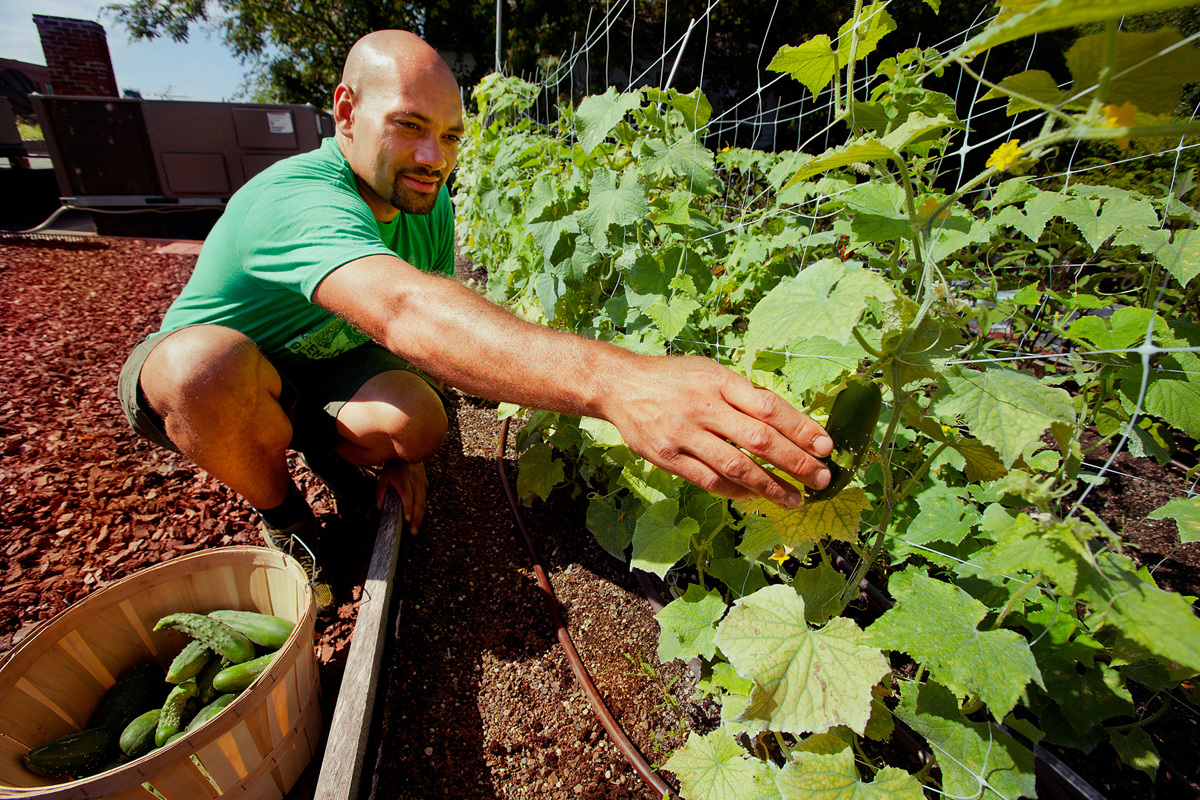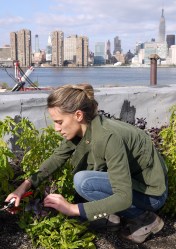From appetizers to entrees, the menu at Chicago’s Uncommon Ground restaurant touts fresh ingredients from above. Not from heaven, mind you, but maybe the next best thing: The Swiss chard and herbs adorning the beer-braised mussels were grown on the roof.
Today’s harvest, which comes care of “Farmer Jen” Rosenthal, includes a bounty of fresh basil, tomatoes, peppers, and salad greens. “The staff can pick at the peak of ripeness and the food literally comes down a flight of stairs and straight into the kitchen,” Farmer Jen tells visitors during tours.
Five years ago, there were no rooftop farms in North America, says Steven Peck, president of the Toronto-based nonprofit Green Roofs for Healthy Cities. (Gardens, sure, but nothing producing food on a commercial scale.) Today, he estimates there are 20. Five years from now, there will be more than 100, he says, and numbers will continue to soar.
“This is just the tip of the iceberg,” Peck says. “Rooftop farming is under consideration in every major city in America.”
Already, Method, the green-minded soap company, is designing a rooftop farm for a new manufacturing plant planned in Chicago’s Pullman neighborhood. The 40,000-square-foot Higher Ground Farm will soon top the Boston Design Center. And there are rumblings that New York City, already a hotbed of urban farming activity, may become home to the largest rooftop farm in the country: Gotham Greens’ hydroponic farm atop a new Brooklyn Whole Foods will stretch across 100,000 square feet, almost the size of two football fields.
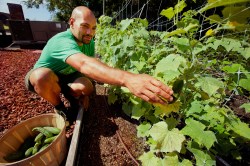
Patrick Rogers PhotographyLedge Kitchen and Drinks, Dorchester, Mass.
With the continuing threat of climate change, it will be important for cities to have access to a nearby food system, Peck says. When combined with on-the-ground urban farming and the increasing production of food on new and smaller rural organic farms, rooftop farming helps create a consort for building resilient urban food supplies.
Not only that, but rooftop farming also increases property values, cleans the air, cools buildings, cleverly converts unused space, and cuts down on pollution created when we transport food long distances. These farms create jobs, boost the local economy, and advance the nation’s quest towards healthy eating. They even help with storm water management. Whew.
“People are hungry for this,” says Lauren Mandel, project manager and rooftop agriculture specialist at Philadelphia-based Roofmeadow, where she designs vegetated roofs and rooftop farms throughout the U.S. “People are hungry for local food. People are tired of thinking of pesticides and all the other crummy things found in their food that they can’t control.”
Mandel, 30, began documenting the evolution of rooftop agriculture as a graduate student in landscape architecture at the University of Pennsylvania, and now blogs about rooftop farming at eatupag.com. Her recently published book Eat Up: The Inside Scoop on Rooftop Agriculture details, in 250 photo-filled pages, “the nuts and bolts, practicalities and case studies” of rooftop farming, and features interviews with some of the nation’s top (ahem) growers.
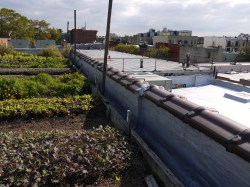
Lauren MandelEagle Street Rooftop Farm, Brooklyn.
Mandel says rooftop farms now supply food for restaurants and grocery stores, and serve as CSAs, selling shares to the local community. There are hydroponic greenhouse roof farms and open-air row farms where crops are grown in soil in traditional rows. There are container farms and raised-bed farms.
And what might grow on a roof farm among a city’s sea of lightning rods, roof drains, and humming mechanical equipment? Produce, chickens, fruits, fish, and rabbits, to name a few things. Some farms, such as Urban Apiaries in Philly, raise bees for honey products. The farms are appearing on large, multi-acre warehouse roofs, factories and big box stores, parking garages and subway roofs.
They’ve become so popular, Mandel says, that cities are rapidly adapting ordinances to allow for more, and architects are now considering them in their blueprints. (It’s best not to try farming on a roof without first getting some input from an architect and/or an engineer who can determine a roof’s strength and, if necessary, shore up its load capacity. You may need an electrician and a plumber as well.)
Growing food on high isn’t exactly new. Humans were known to plant food on buildings or on tiers as far back as 600 B.C. The Hanging Gardens of Babylon are thought to have contained fruit trees and produce.
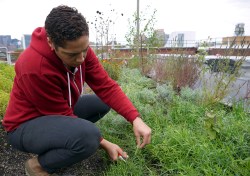
Lauren MandelEagle Street Rooftop Farm, Brooklyn
But on our home turf, most Americans became separated from their food source in the wake of the Industrial Revolution, Peck says. “It was the beginning of the great urban/rural divide. Land values rose and the suburbs took over; it chewed up the farms.”
As farming was pushed to the fringes, the image and respect for farmers also shifted. Rather than honored for providing bounty, they were stereotyped as hayseeds and bumpkins. Corporations took over many rural farms. In the ’80s, crisis struck the heartland.
And you know the rest of the story. A younger generation has embraced the grow-your-own movement. For evidence, look no further than Farmer Jen, 34, whose plot atop Uncommon Ground became the first certified organic roof farm in the country in 2007.
“It’s that pioneer spirit,” Mandel says. “Urbanites are taking advantage of unused space and infrastructure, and entrepreneurs are picking up the scent.”

